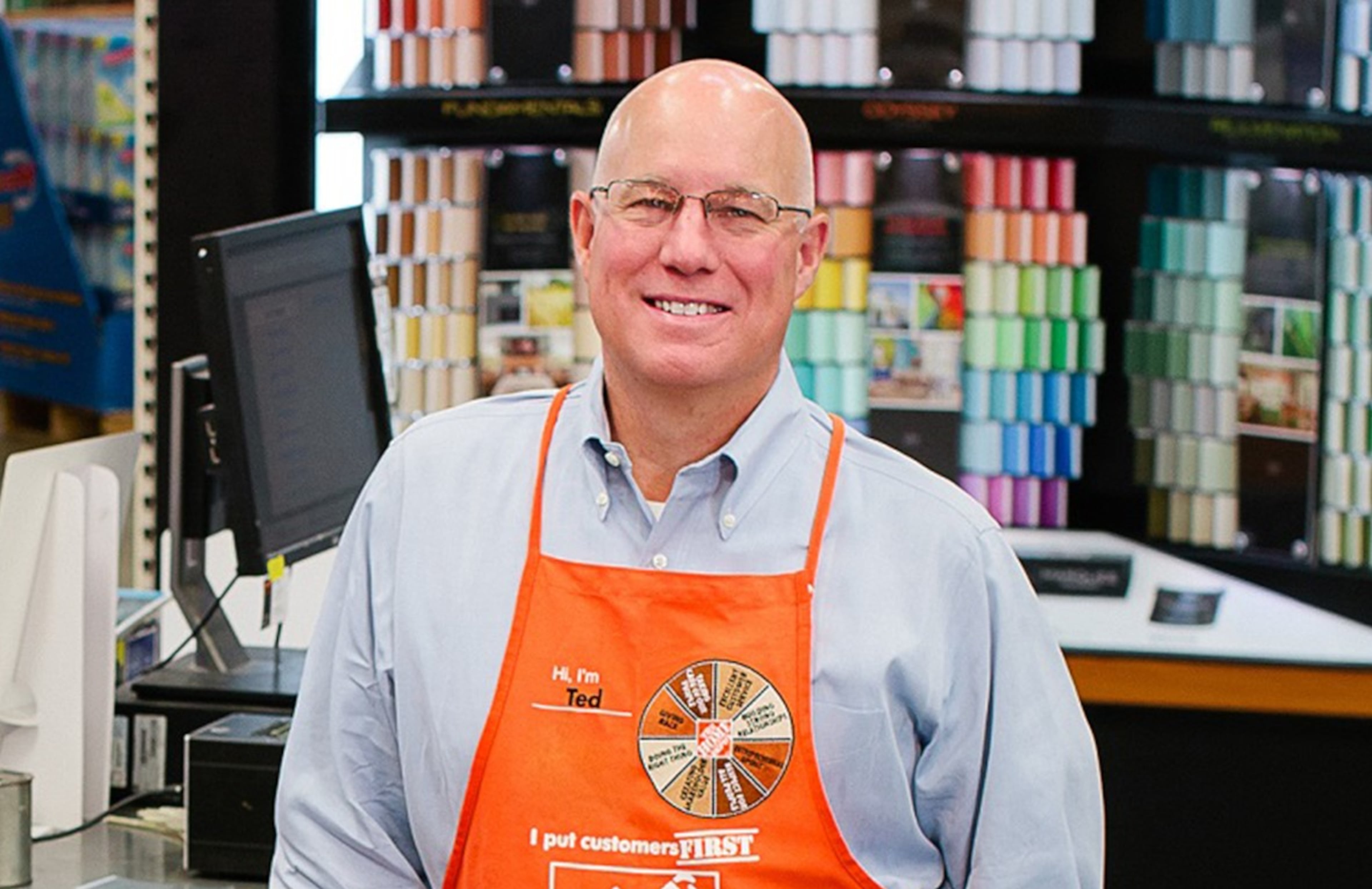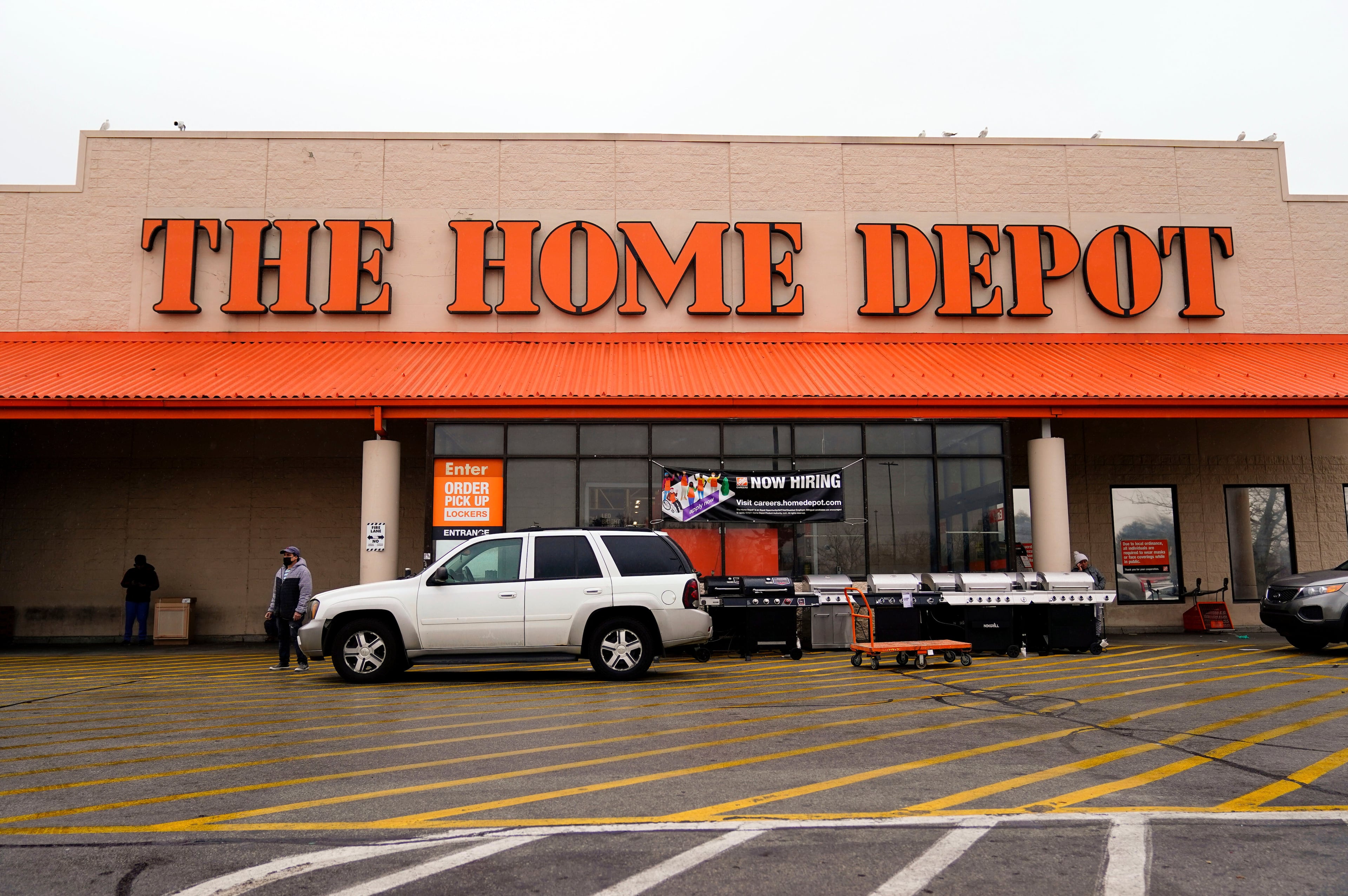Don’t expect storewide price increases despite tariffs, Home Depot says
Home Depot on Tuesday reported sales growth in its fiscal first quarter as consumers continued to show resiliency in the face of the trade war, but growth for existing stores in the U.S. was soft, a sign consumers continue to be guarded in making big purchases.
As other retailers have pared back or put on pause their earnings expectations, the Vinings-based retail giant kept its guidance in place, saying Tuesday it still expects sales across its footprint to grow 2.8% for the fiscal year. Executives also said they did not expect widespread price increases on products as the company has worked to diversify where it buys inventory and find cost savings elsewhere.
The people who tend to shop at Home Depot — largely homeowners and the contractors who serve them — have faced the uncertainties of the trade war, undulations in the stock market and high interest rates that have made borrowing for big projects and homebuying more difficult.
The trade war has challenged businesses in figuring out purchasing, managing inventory and how to plan, and economists have warned the import taxes are likely to lead to inflation. Home Depot, given its place in the retail world, is a bellwether for the broader economy, and its performance offers clues to how homeowners and contractors are faring.
The worst appears to be in the rearview mirror, Home Depot Chairman, President and CEO Ted Decker said in a conference call with investors and analysts. President Donald Trump has pulled back from his maximalist positions on tariffs — though U.S. tariff rates remain high — and the stock market has bounced back from a dreadful April as consumer and business sentiment plummeted.
The average Home Depot customer has an income of $110,000 and 80% are homeowners, Decker said.
“Our customer is in a good spot right now,” he said.

Home construction remains constrained, and homeowners have huge amounts of home equity that they could borrow against.
Still, consumers are cautious. Faced with persistently high interest rates, homeowners have remained skittish to start big projects.
But the nation’s housing inventory is aging, increasing the need for maintenance and upgrades. Decker said that means consumers could come off the sidelines as the retailer heads deeper into spring and into the summer, which executives call the “Super Bowl” season for the world’s largest home improvement retailer.
“We remain bullish on the fundamentals of home improvement, and we are confident we are best positioned to win,” Decker said.
‘Because of our scale’
Home Depot said its sales grew 9.4% to $39.9 billion in the quarter that ended May 4. A big part of that growth came from its purchase last year of SRS Distribution, a business that serves residential contractors. The company also opened three stores in the quarter.
Net income in the quarter was $3.4 billion, down about 5% from the same period last year.
When counting stores open at least a year, sales across Home Depot’s network dipped 0.3% in that time, while sales at U.S. existing stores grew a modest 0.2%, the company said. Foreign currency rates played a role in the dip in international same store sales.
Home Depot said the quarter met its internal expectations, though Bloomberg reported its earnings missed Wall Street expectations.
Poor weather in the northern U.S. and Canada also played a role in sales softness, but sales appear to be rebounding in the early weeks of the company’s second fiscal quarter, executives said on the conference call.
While measures of inflation have remained low as Trump slapped tariffs on countries worldwide, retailers have warned price increases could soon begin to appear in stores and online.
Walmart executives last week said that despite efforts to keep prices low and absorb costs, Trump‘s import taxes would force it to raise prices. That triggered a harsh response from Trump on social media, who said the company should “EAT THE TARIFFS.”
Home Depot executives on Tuesday’s call highlighted the company’s efforts over the years to diversify its supplier base. More than half the products in its stores are sourced from the U.S., and executives said that within the next 12 months, no country outside the U.S. will be the origin of more than 10% of its goods.
“Because of our scale, the great partnerships we have with our suppliers and productivity that we continue to see in our business, we intend to generally maintain our current pricing levels across our portfolio,” Home Depot Chief Financial Officer Richard McPhail said.

